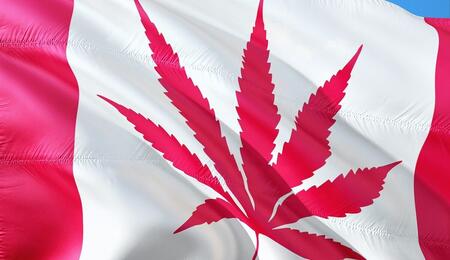Canada Five Years Into Legalization

The hopes were high when Canada allowed the sales of legal recreational cannabis five years ago. It was a rare moment in cannabis history, as few countries around the world fully permit legal access to weed. And while it’s good not to worry where to buy weed for the upcoming weekend, legal operators in Canada have faced more than a few hurdles. Many are struggling to keep things going, they are failing to make enough profits, and are increasingly turning to unpopular measures such as reducing the team size or even filing for bankruptcy.
What happened to an industry that Deloitte once forecast to be worth over $22 billion? There are currently a lot of questions about the stability and prosperity of Canada’s legal cannabis market. Five years into legalization, Canada’s cannabis market is shaking. The industry is dealing with huge economic problems, and there’s little optimism left of the early days when the sector started.
There are many indicators that tell the situation is difficult. Here are five of them.
#1 The Big Players Are Pivoting
There have been obvious signs from Aurora Cannabis, Canopy Growth and Tilray, some of the largest operators in Canada, that something is off.
During the summer, Aurora announced it will be diversifying its offer and start selling orchids. In the same period, Canopy Growth sold back its multi-million headquarters to Hershey Canada. Tilray sold its iconic Vancouver Island facilities earlier this year, and in August it acquired several beer brands to push its own diversification agenda.
Companies around the country have been routinely downsizing the number of their employees in a bid to reduce costs as they continue to turn limited profit, if they are profitable at all. It’s even more difficult for smaller operators, the ones that have declared bankruptcy or been sold off.
#2 There Is Overregulation of Cannabis
Canada’s cannabis market has so many restrictions in place, and that’s giving a big headache to operators. The main idea of overregulation is to balance between public health and building a strong industry, but sometimes it’s just exhausting to follow through with everything.
A recent example is how regulators proposed restrictions to use the words “soda,” “cola,” “root beer” or “ale” on the labels of infused cannabis products. The words are deemed as too inciting for young people.
Cannabis companies are also not supposed to advertise their offerings or invest in branding as companies in other sectors. Dispensaries have their windows covered so it’s not visible what’s in, and weed is sold in government-approved packaging. They also pay higher regulatory fees than companies that sell other controlled substances.
In the words of Michael Armstrong, a cannabis business researcher at Brock University in Ontario, “The big trade off in legal cannabis is: how do you make the legal market attractive enough to get all the existing users to go with the legal weed, but not so attractive that you get a whole bunch of new users starting up.”
#3 There Are Just Too Many Cannabis Shops
Another big issue is the oversaturation of the market. Some provinces and cities in Canada have just too many places where people can buy weed, and it’s difficult for operators to stand out in the competition. This red flag was obvious in Ontario after the first pandemic year, when the number of pot shops grew from less than a hundred to over 500 provincewide.
Cannabis dispensaries were initially very profitable. But the clustering of shops in the same districts meant that everyone had to lower their prices and offer incentives to have some chance and outsell the dispensaries next door.
More than 3,600 licensed retail cannabis shops function in Canada right now, and there are little less than a 1000 licensed cannabis producers. Only a fifth of them have reported they are profitable.
#4 Illegal Trade is Still Eating Much of the Profits
One of the main goals of legalization was to turn away Canadians from purchasing weed on the illegal market. But five years after the introduction of the Cannabis Act, the illegal trade is still holding strong. It's estimated that drug dealers control around a third of all profits.
The edibles market segment is a real example. Unregulated online merchants offer cheaper and more potent infused products than what’s on the offer in licensed shops. So, people obviously opt the first over the latter.
Also, a lot of people simply continued to purchase weed on the street in the early years of legalization, because there was not enough product in the dispensaries in the first place. From lack of product supplies the industry then went into excess.
#5 Too Much Cannabis Was Produced
There were no doubts at the time that Canadians and the country’s economy as a whole would largely benefit from legal cannabis. This still holds true in a number of ways.
The domestic cannabis market is worth in the billions. Cannabis brought more than CA $43 bn (almost US$ 32 bn) to the country’s gross domestic product since legalization, according to a 2022 Deloitte Canada report.
But, overproduction of cannabis in the last few years has led to such a huge surplus of weed that, sadly, tons of it now goes to waste. Translated into investments, it’s a loss of over CA$ 131 bn.
It’s a labyrinth of problems. With all said, there is a lot to be fixed with Canada's legal cannabis market. Production, retail, and regulation all need to become more balanced so that the market can hold. Without balancing, business operators will continue to be overwhelmed by problems and they will keep on losing profits.
Also read on Soft Secrets:

_11zon.jpg)












